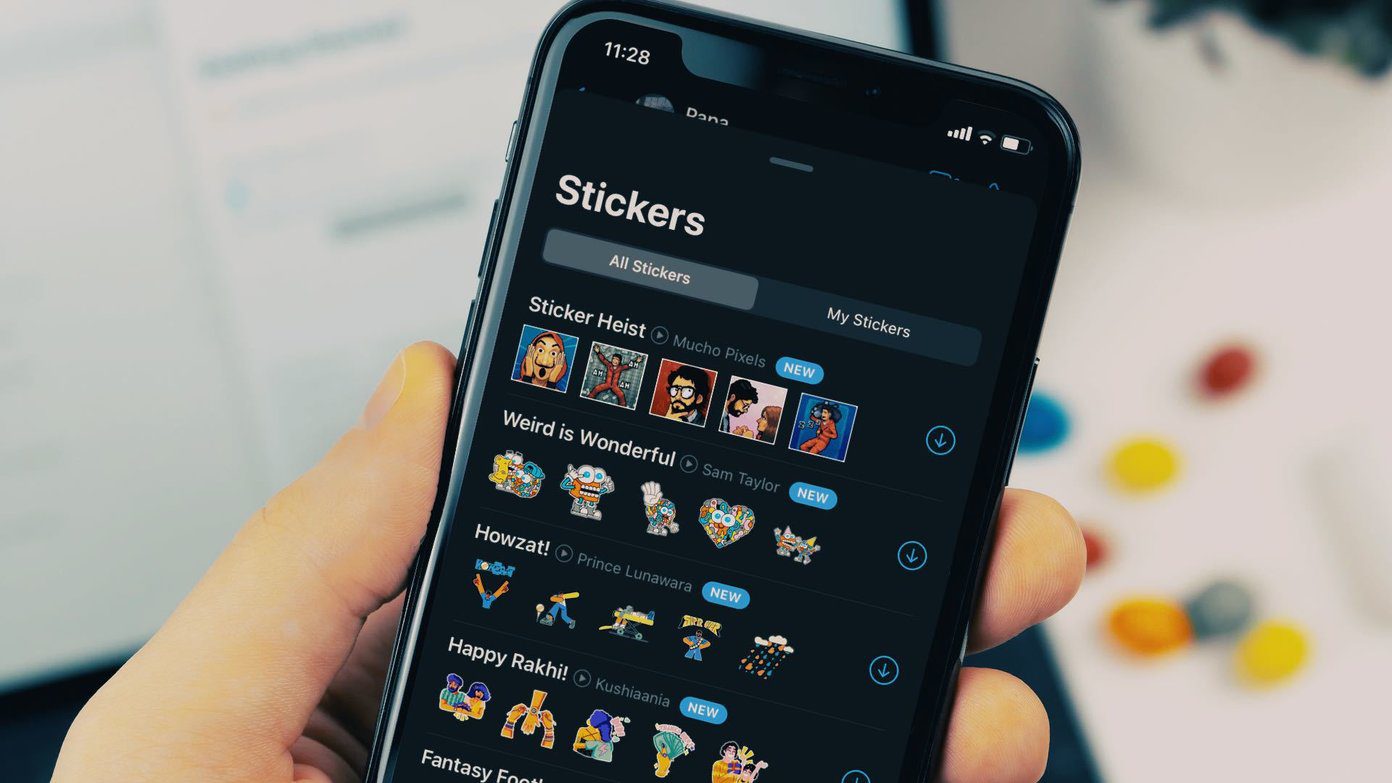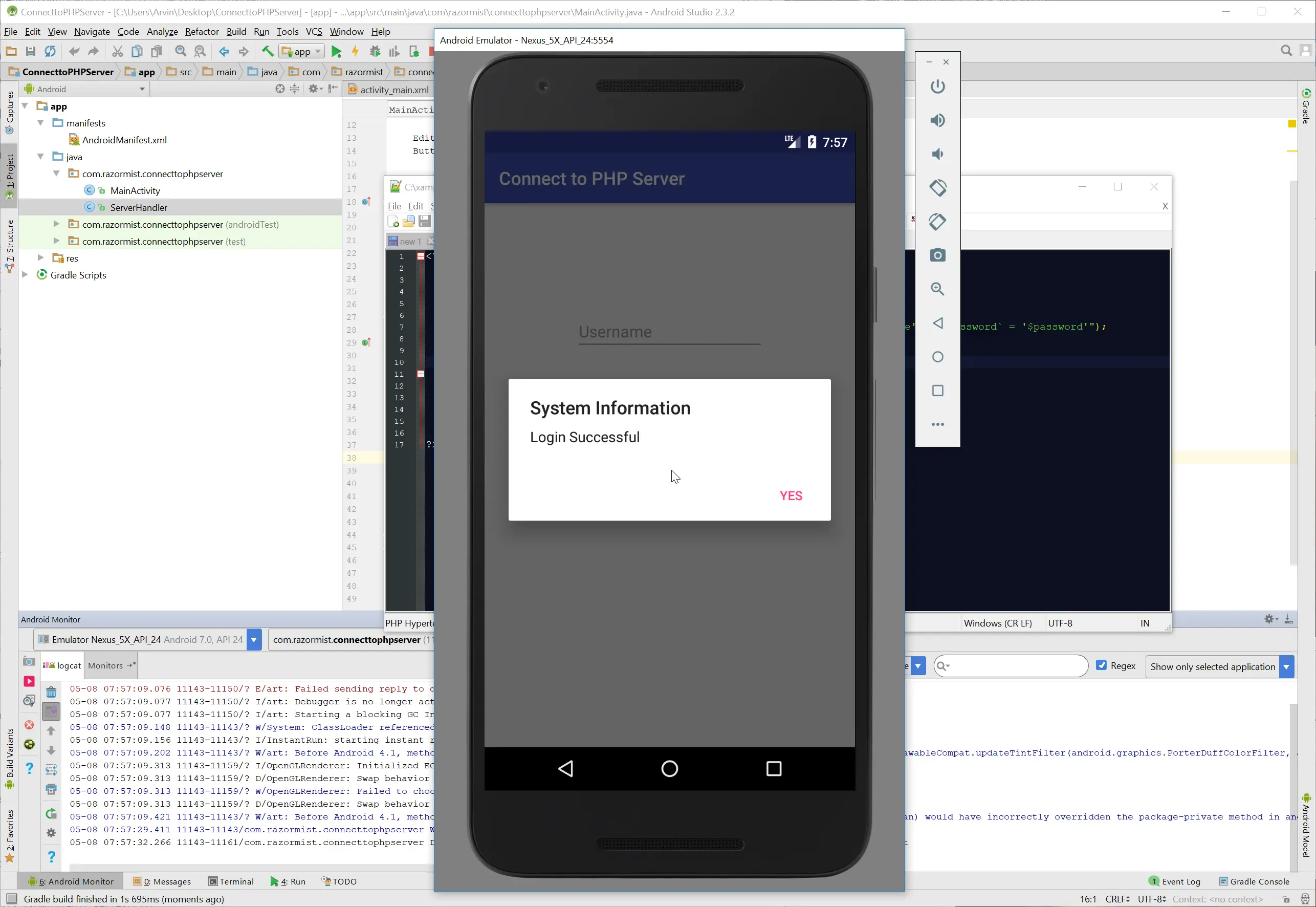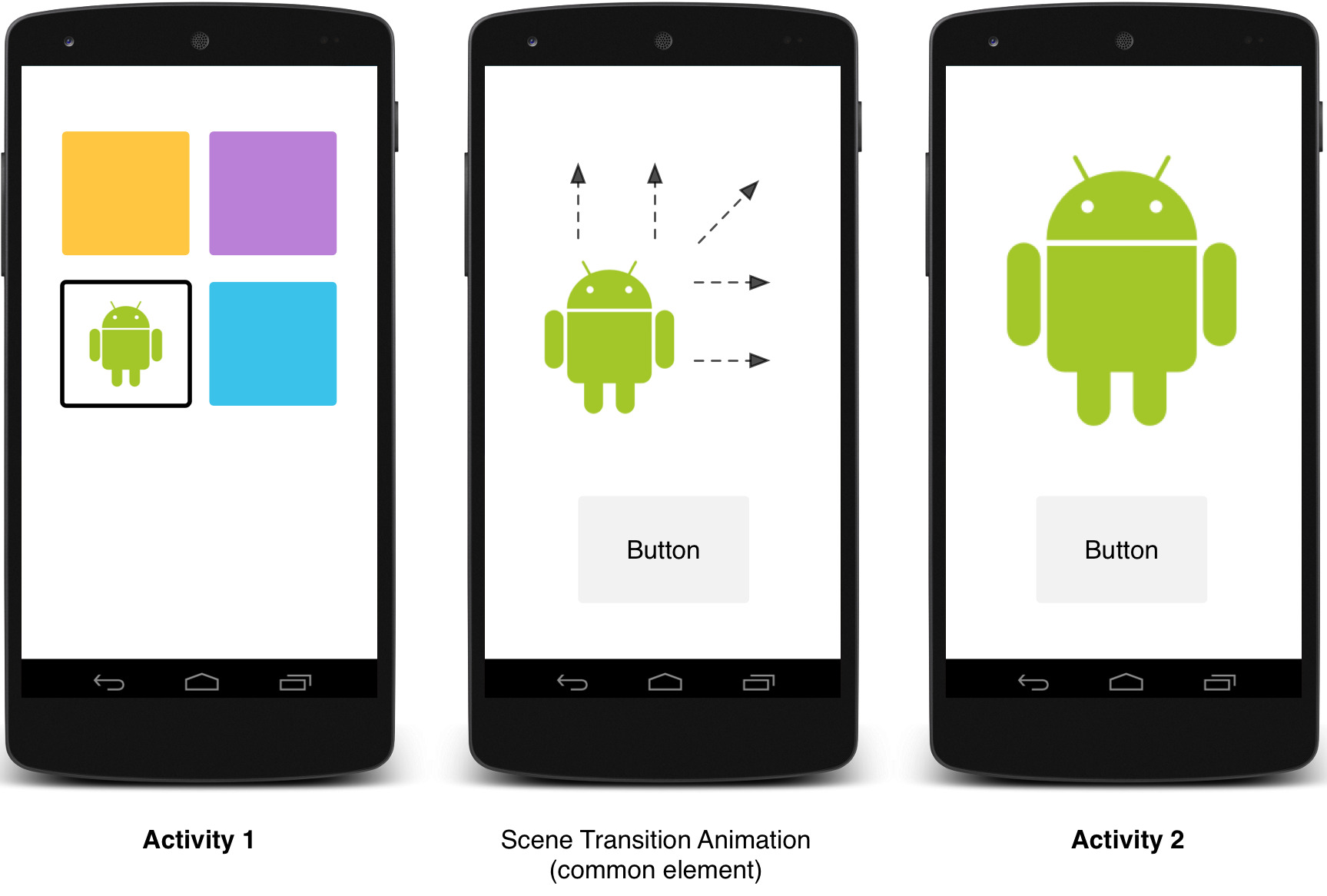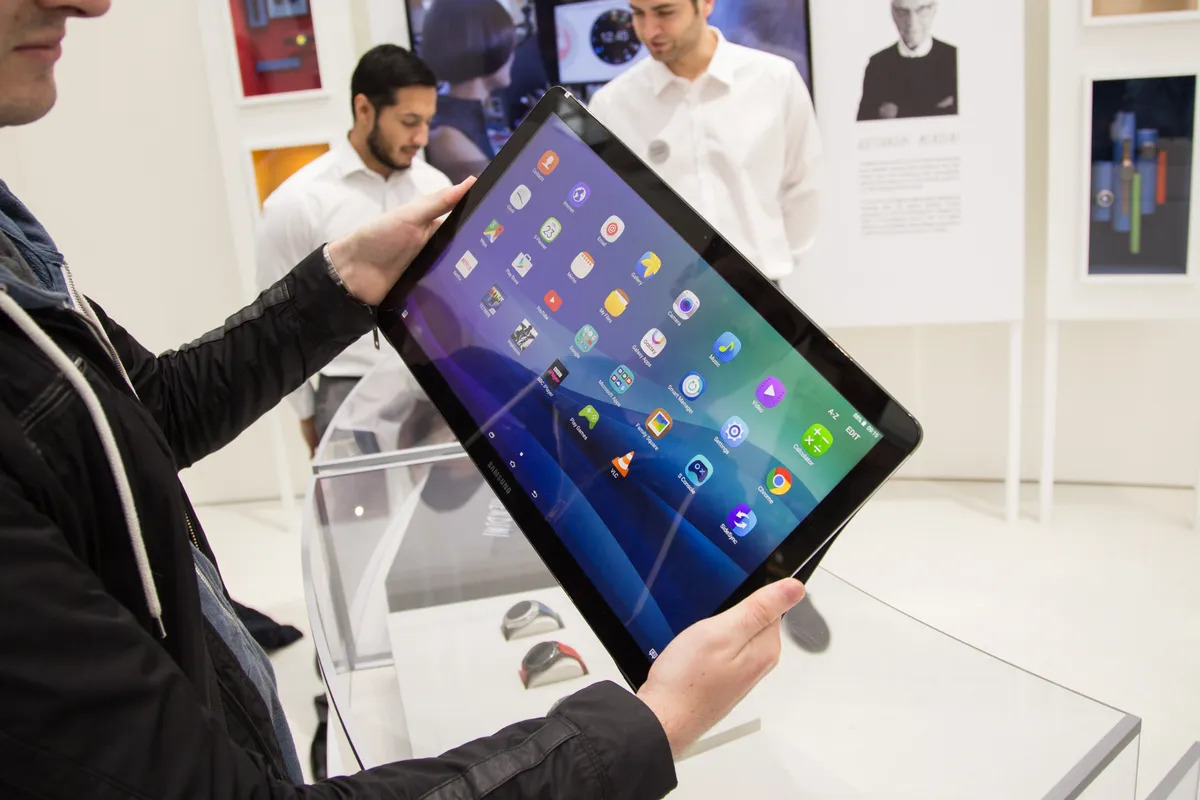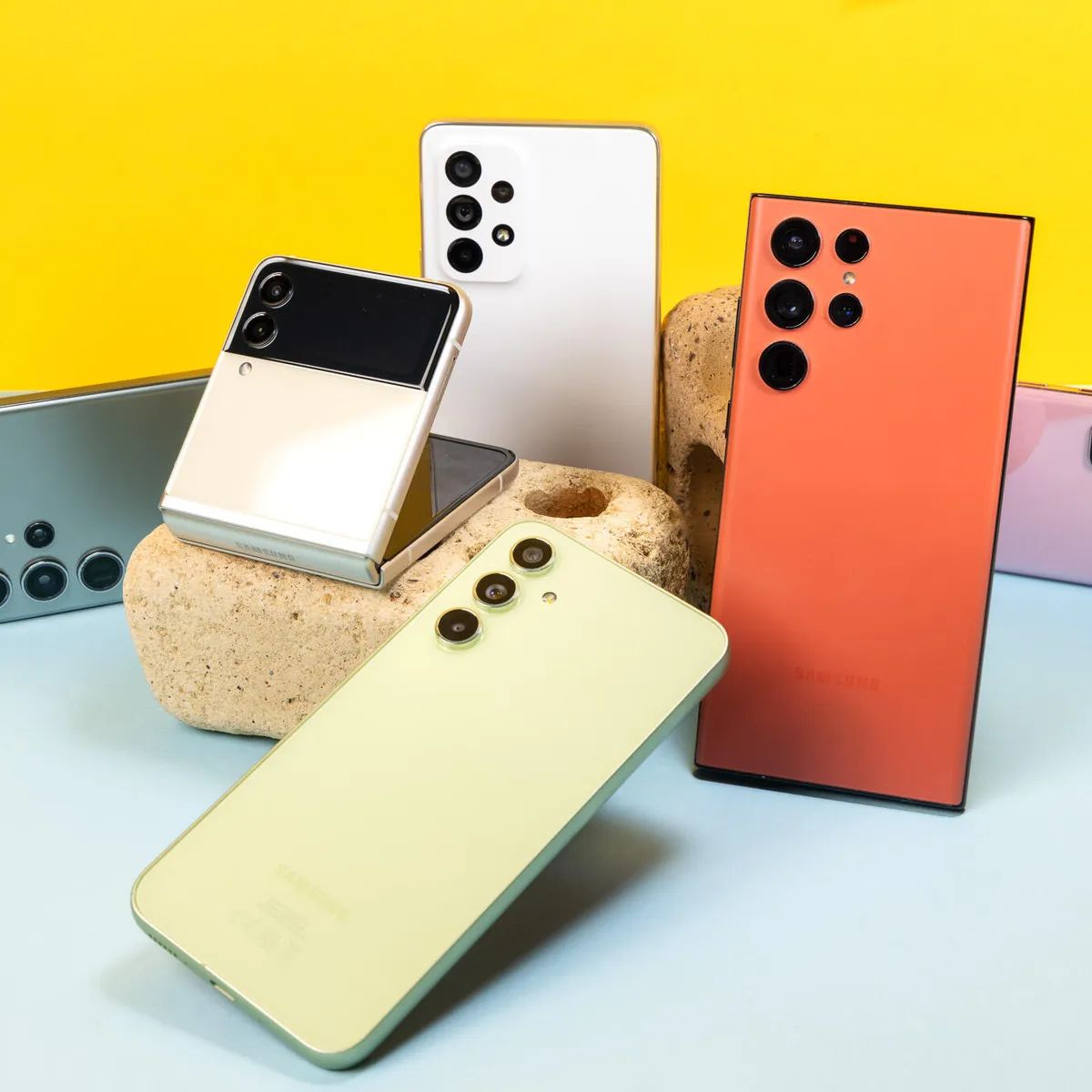Introduction
When you interact with your Android device, you are likely to come across the term “System UI.” It refers to the user interface elements, features, and functionalities that allow you to navigate and interact with your device’s operating system. Understanding System UI is crucial as it impacts the overall user experience and accessibility of your Android device.
The System UI on Android encompasses various visual elements, such as the status bar, navigation bar, app drawer, and notification panel. These components provide a bridge between you and the underlying operating system, allowing you to control and navigate through various settings, apps, and functions efficiently.
System UI plays a crucial role in ensuring a seamless and intuitive user experience. From displaying vital information like battery life and network connectivity to managing notifications, the System UI strives to simplify and enhance your Android experience.
In this article, we will explore the features and components of System UI on Android, discuss how to interact with it, and touch upon options for customizing it to suit your preferences.
What is System UI?
System UI refers to the user interface elements and functionalities that are an integral part of the Android operating system. It serves as a bridge between the user and the underlying system, providing a means to interact with and control various aspects of the device.
At its core, System UI is responsible for managing and displaying crucial information, system notifications, and navigation controls. It provides a consistent and intuitive interface that allows users to access and control the features and settings of their Android devices.
The System UI includes components such as the status bar, navigation bar, quick settings panel, app drawer, and notification panel. Each of these elements serves a specific purpose to enhance the user experience.
The status bar, for example, is located at the top of the screen and displays important information, such as battery life, network signal strength, and time. It also hosts icons for system notifications, such as incoming calls, messages, and updates.
The navigation bar, typically located at the bottom of the screen, provides virtual buttons for navigating through the device’s interface. It includes the back button, home button, and recent apps button, allowing users to effortlessly switch between applications and access device settings.
The app drawer, on the other hand, houses all the installed applications, making it easy for users to search for and launch specific apps. It provides a centralized location to access and organize the various applications on the device.
The notification panel, accessible by swiping down from the top of the screen, displays incoming notifications from apps, allowing users to quickly access and manage them. It also provides shortcuts to frequently used settings, such as Wi-Fi, Bluetooth, and screen brightness.
By providing these key components, System UI ensures a seamless and user-friendly experience on Android devices. It allows users to interact with their devices effortlessly, navigate through different apps and settings, and access important information and notifications.
In the next section, we will delve deeper into the features and functionalities of System UI on Android devices, exploring how they contribute to enhancing the overall user experience.
Features of System UI on Android
The System UI on Android offers a range of features that enhance the overall user experience and provide convenient navigation and control options. Let’s explore some of the key features of System UI:
- Status Bar: The status bar displays essential information such as battery life, network connectivity, and time. It also houses notification icons for incoming calls, messages, and app alerts.
- Navigation Bar: The navigation bar includes virtual buttons, such as the back button, home button, and recent apps button, to help users navigate through various apps and return to the home screen easily.
- Quick Settings Panel: The quick settings panel provides easy access to frequently used settings, such as Wi-Fi, Bluetooth, screen brightness, and airplane mode. Users can swipe down from the top of the screen to access this panel and make quick adjustments without navigating through multiple menus.
- App Drawer: The app drawer stores all installed applications in one place, allowing users to quickly search for and launch specific apps. It provides a convenient way to organize and access the vast array of applications on an Android device.
- Notification Panel: The notification panel displays incoming notifications from apps, including text messages, emails, social media updates, and more. Users can expand the notifications to view more details or take quick actions, such as replying to a message or dismissing an alert.
- Lock Screen: The lock screen on Android devices provides quick access to essential functions, such as camera, flashlight, and music controls, without unlocking the device. Users can also view notifications and respond to them directly from the lock screen.
- System Theme and Wallpaper: Android allows customization of the system theme and wallpaper to personalize the device’s appearance. Users can choose from a variety of pre-installed themes and wallpapers or download their own to give their device a unique look.
These are just a few of the many features that System UI offers on Android devices. Together, they provide a seamless and intuitive user experience, allowing users to navigate, access settings, and manage notifications effortlessly. The System UI acts as a crucial interface between the user and the underlying operating system, making Android devices more user-friendly and accessible.
In the next section, we will take a closer look at the common components and interactions with System UI on Android devices.
Common Components of System UI
The System UI on Android devices consists of several common components that provide users with a seamless and intuitive interface. These components work together to enhance the user experience and allow for efficient navigation and control. Let’s take a closer look at some of the most common components of System UI:
- Status Bar: The status bar is located at the top of the screen and provides key information such as battery life, network connectivity, and time. It also displays system icons for notifications, such as incoming calls, messages, and app alerts.
- Navigation Bar: The navigation bar is typically located at the bottom of the screen and includes virtual buttons for navigation. It allows users to perform actions such as going back, returning to the home screen, and accessing recent apps.
- App Drawer: The app drawer is where all installed applications are stored. This component provides an organized and easily accessible list of apps, allowing users to locate and launch specific applications quickly.
- Notification Panel: The notification panel is accessed by swiping down from the top of the screen. It displays incoming notifications from apps, allowing users to view and interact with them. It also provides shortcuts to settings and quick actions.
- Quick Settings Panel: The quick settings panel is accessible from the notification panel or by swiping down with two fingers. It provides quick access to frequently used settings, such as Wi-Fi, Bluetooth, screen brightness, and airplane mode.
- Lock Screen: The lock screen appears when the device is turned on or wakes up from sleep. It provides quick access to essential functions like camera, flashlight, and music controls, without unlocking the device.
- App Switcher: The app switcher, also known as the recent apps or multitasking view, allows users to switch between recently used applications. It provides a convenient way to navigate between apps without returning to the home screen.
- System Settings: The system settings menu allows users to customize various aspects of their device, including display settings, sounds, battery usage, security options, and more.
These common components of System UI work together to provide users with a cohesive and easy-to-use interface. They enable smooth navigation, quick access to settings, and effortless management of notifications. By familiarizing yourself with these components, you can make the most of your Android device and optimize your experience.
In the next section, we will discuss how users can interact with the System UI on Android devices to access features and customize settings.
Interaction with System UI
Interacting with the System UI on Android devices allows users to access various features, settings, and functionalities. Understanding how to interact with System UI is key to maximizing the user experience and efficiently navigating through the device. Let’s explore some common interactions with the System UI:
- Tap and Swipe: Tapping is the primary way to interact with the System UI. Users can tap on app icons, notifications, and settings to open them. Swiping is used for actions like scrolling through apps in the app drawer, swiping down to access the notification panel or quick settings, and swiping up to exit full-screen apps.
- Navigation Bar: The virtual buttons on the navigation bar provide navigation options. Tapping the home button takes users back to the home screen, pressing the back button returns to the previous screen, and the recent apps button displays the app switcher to switch between recently used apps.
- Status Bar: Tapping on the status bar can open the notification panel, where users can view and interact with notifications. Swiping down with two fingers opens the quick settings panel, allowing users to make quick adjustments to settings like Wi-Fi, Bluetooth, and screen brightness.
- Long Press: Long-pressing an app icon or notification can trigger additional options. For example, long-pressing an app icon on the home screen may provide options to uninstall the app or access its app-specific settings. Long-pressing a notification can show options like snooze or dismiss.
- Gesture Navigation: Newer versions of Android support gesture navigation, where users can swipe up from the bottom of the screen to go to the home screen, swipe up and hold to access recent apps, and swipe from the sides to go back. This offers an alternative to the traditional navigation buttons.
- Custom Shortcuts: Some Android devices allow users to assign custom actions to specific gestures or buttons. For instance, a double-tap on the home button may launch the camera, or a swipe gesture on the fingerprint sensor may open a favorite app.
- Voice Commands: Android devices support voice commands through virtual assistants like Google Assistant. Users can interact with the System UI by speaking commands to perform tasks like sending messages, making calls, or checking the weather.
These interactions with the System UI provide users with a range of options to navigate through the device, access settings, and control various features. Experimenting with different gestures and exploring the available options can help users discover hidden functionalities and streamline their Android experience.
In the next section, we will explore how users can customize the System UI to personalize their device and tailor it to their preferences.
Customizing System UI
One of the advantages of using an Android device is the ability to customize the System UI to suit individual preferences and aesthetics. Android provides users with various options to personalize the look and feel of their device. Let’s explore some of the ways you can customize the System UI:
- Wallpapers and Themes: Android allows users to choose from a wide range of wallpapers to personalize the device’s home screen and lock screen. Additionally, users can apply themes to change the overall appearance, including icons, colors, and fonts.
- Widgets: Android supports widgets, which are interactive elements that provide quick access to information or perform specific tasks. Users can add widgets to their home screen, such as weather widgets, calendar widgets, and music player widgets, to customize the information they see at a glance.
- App Icon Packs: Users can install and apply different app icon packs from the Play Store to change the look of their app icons. Icon packs offer a variety of styles and designs, allowing users to personalize their device further.
- Custom Launchers: Android allows users to install custom launchers, which completely change the look and behavior of the home screen and app drawer. Custom launchers offer extensive customization options, such as grid size, transition effects, and gesture controls.
- Notification Settings: Android provides granular control over notification settings. Users can choose to prioritize or silence specific app notifications, set notification alerts and sounds, and control the visibility of sensitive information on the lock screen.
- System Fonts: Some Android devices allow users to change the system font to personalize the text appearance throughout the device. Users can choose from various fonts available or even download and install their preferred fonts.
- Accessibility Options: Android offers a range of accessibility options to cater to different user needs. Users can customize features like font size, display size, color inversion, and gesture controls to ensure a more accessible and comfortable user experience.
These customization options provide users with the flexibility to create a unique and personalized Android experience. Whether it’s adjusting visual elements, changing icons, or fine-tuning notification settings, users can tailor the System UI to their liking and make their device truly their own.
It’s worth noting that the availability of customization options may vary based on the Android device and version of the operating system. Nevertheless, exploring the device’s settings and checking for third-party customization apps on the Google Play Store can reveal a wealth of customization possibilities.
In the next section, we will briefly touch upon troubleshooting common System UI issues that users may encounter.
Troubleshooting System UI Issues
While the System UI on Android devices is designed to provide a seamless user experience, there may be times when users encounter issues or glitches. Here are some common System UI issues that may arise and troubleshooting steps to resolve them:
- Unresponsive or Frozen System UI: If the System UI becomes unresponsive or freezes, try restarting your device. This can help clear any temporary glitches or conflicts that may be causing the issue. If the problem persists, consider clearing the cache and data of the affected apps or performing a factory reset as a last resort.
- Missing or Disappearing Icons: If app icons are missing from the home screen or app drawer, it may be due to accidental deletion or a glitch. Try restarting your device to see if the icons reappear. If not, go to the app drawer or the Google Play Store and reinstall the affected apps.
- Notification Issues: If you’re experiencing problems with notifications, ensure that the apps have the necessary notification permissions enabled. Go to the device’s settings, navigate to the Apps or Notifications section, and make sure the affected apps have proper notification settings configured.
- Slow or Laggy Performance: If the System UI is slow or laggy, it could be due to too many background processes or insufficient device resources. Try closing unused apps, clearing cache files, or restarting your device to free up system resources and improve performance.
- Screen Orientation Problems: If the screen orientation is not functioning correctly, check if the auto-rotate option is enabled in the device’s settings. You can find this option under the Display or Accessibility settings. If it is enabled and still not working, try restarting the device or performing a calibration using the device’s built-in tools.
- System Updates: Keep your device’s software up to date with the latest system updates. System updates often include bug fixes and performance improvements that can address issues with the System UI. Make sure to regularly check for updates and install them when available.
If you encounter persistent System UI issues that you are unable to resolve through troubleshooting, it may be helpful to seek assistance from the device manufacturer’s support resources or forums dedicated to Android troubleshooting. They may provide specific solutions or guidance tailored to your device model and version of the operating system.
Remember, before attempting any troubleshooting steps, it’s a good practice to back up your important data to avoid any potential data loss during the troubleshooting process.
In the next section, we will wrap up the article by summarizing the key points discussed and emphasizing the importance of understanding System UI on Android devices.
Conclusion
In this article, we explored the world of System UI on Android devices. We learned that System UI refers to the user interface elements, features, and functionalities that allow us to interact with the Android operating system. From the status bar and navigation bar to the app drawer and notification panel, each component plays a vital role in providing a seamless and intuitive user experience.
We discussed the features of System UI, such as the status bar displaying important information, the navigation bar facilitating easy navigation, and the app drawer organizing installed applications. We also explored how users can interact with System UI through various gestures and controls, along with options for customization to personalize the device to their preferences.
Additionally, we touched upon troubleshooting common System UI issues and provided potential solutions to resolve them. Restarting the device, reinstalling apps, clearing cache files, and checking notification settings can often address these issues and restore smooth functionality.
Understanding System UI is essential for all Android users. By familiarizing ourselves with its components, features, and interactions, we can maximize the usability and customization options available on our devices. Whether it’s customizing the appearance, optimizing settings, or troubleshooting issues, a good grasp of System UI empowers us to tailor our Android experience to our liking.
As Android continues to evolve, it’s worth keeping up with new features and updates that enhance System UI functionality. Regularly checking for system updates and exploring new customization options can further enhance the user experience and ensure that we make the most of our Android devices.
So, next time you pick up your Android device and interact with its System UI, you can do so with confidence, knowing the importance of each element and how to harness its features to create a personalized and seamless user experience.









